Himalayan or Bhutan Pine
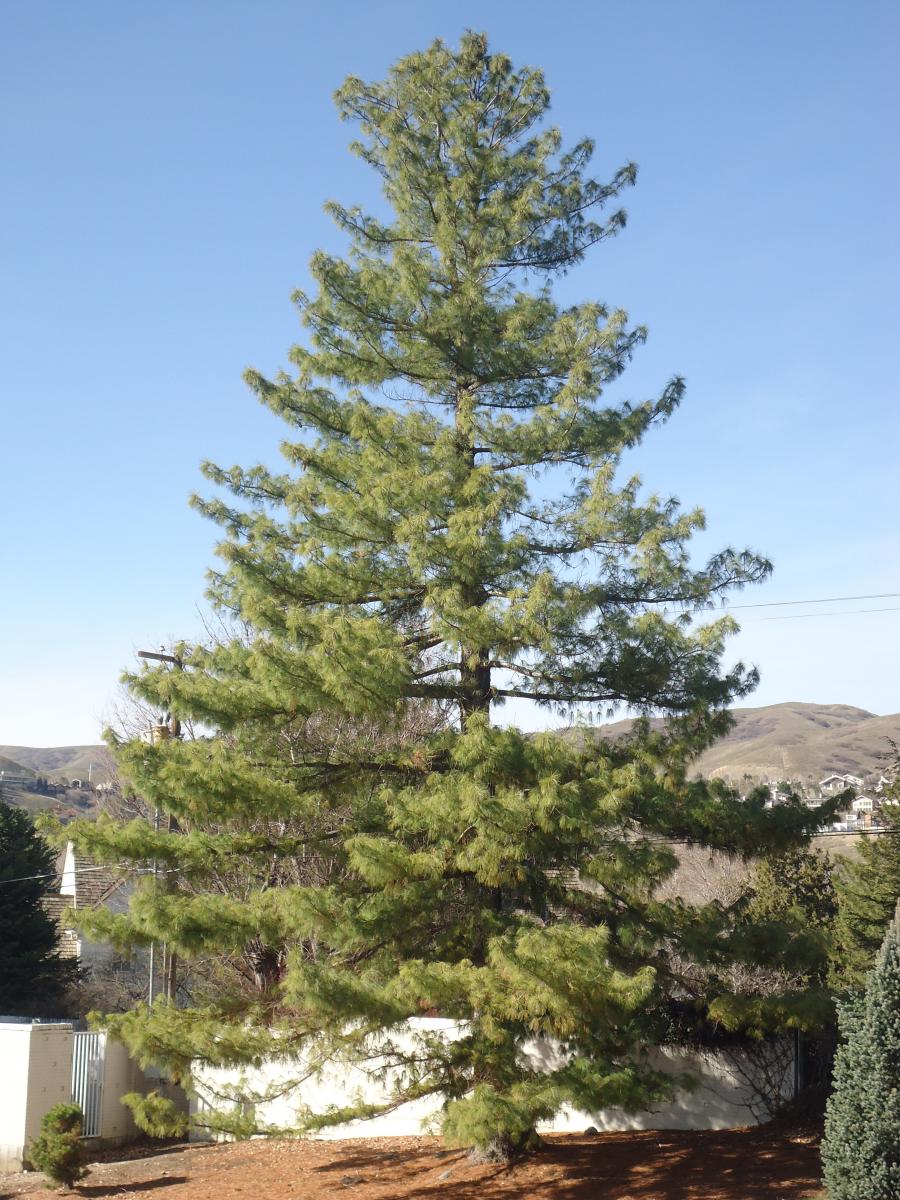
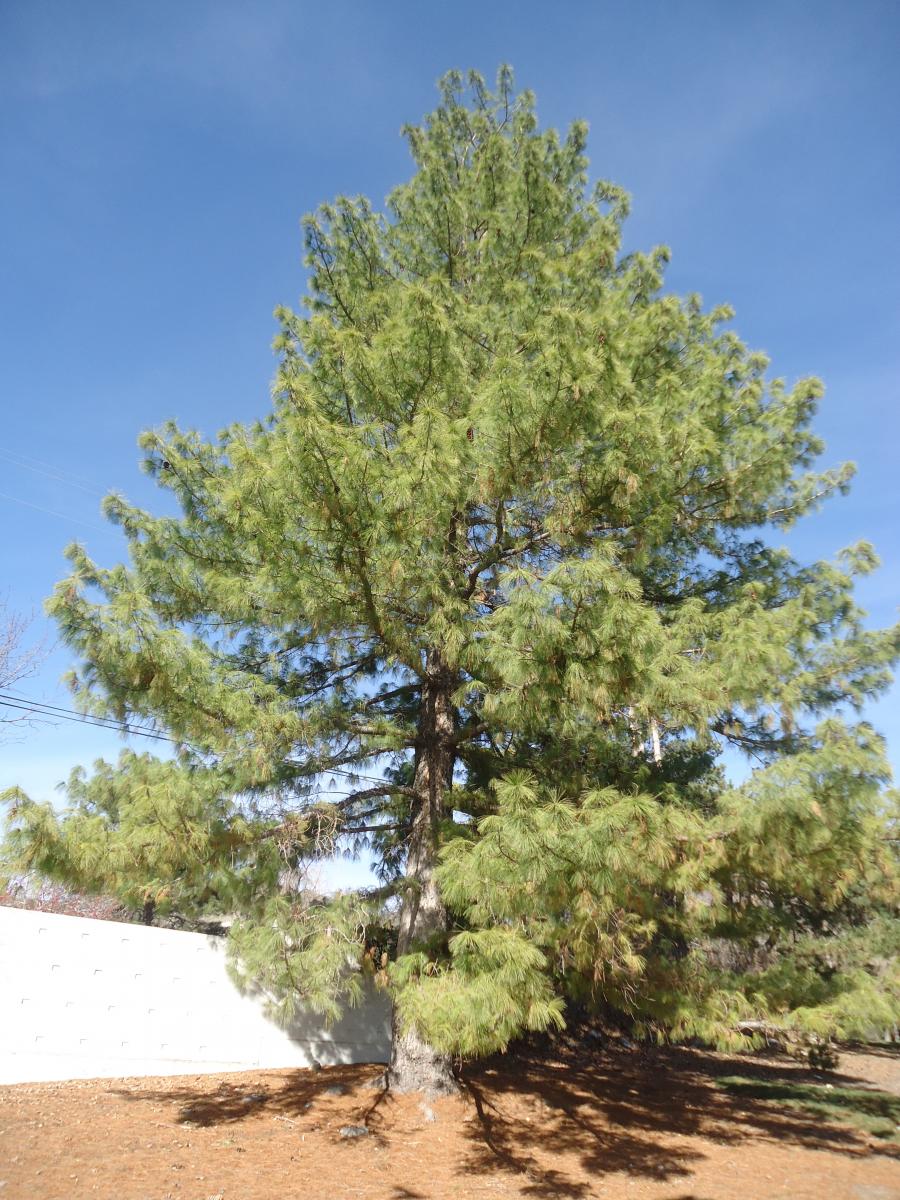
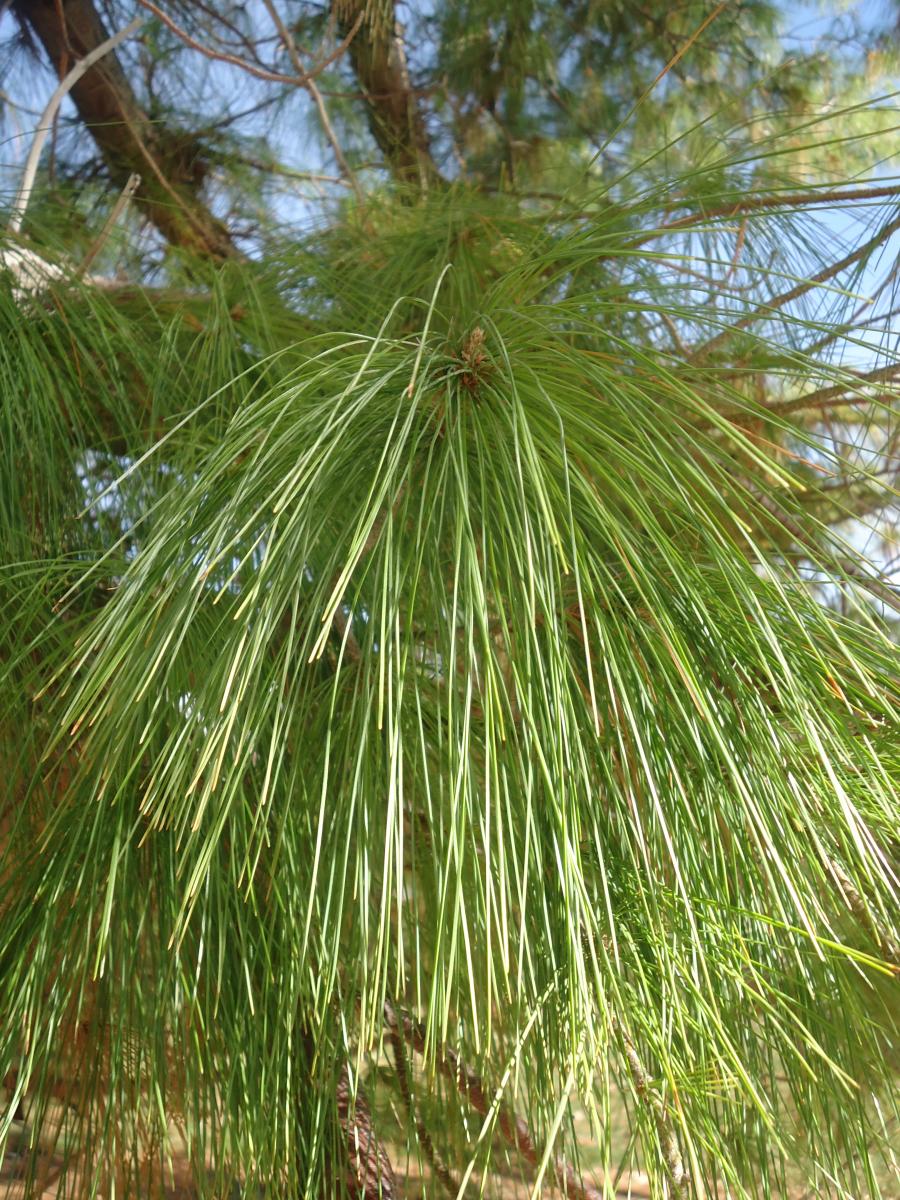
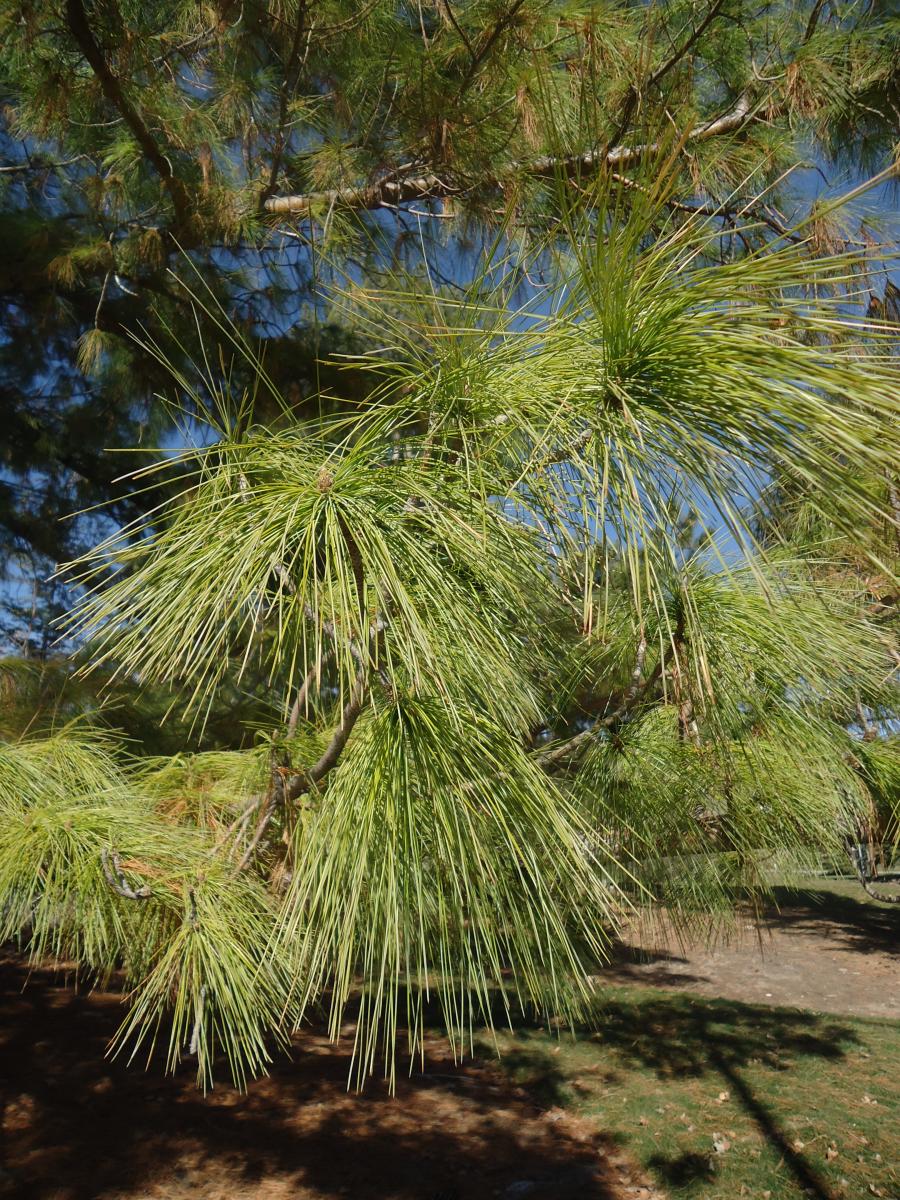
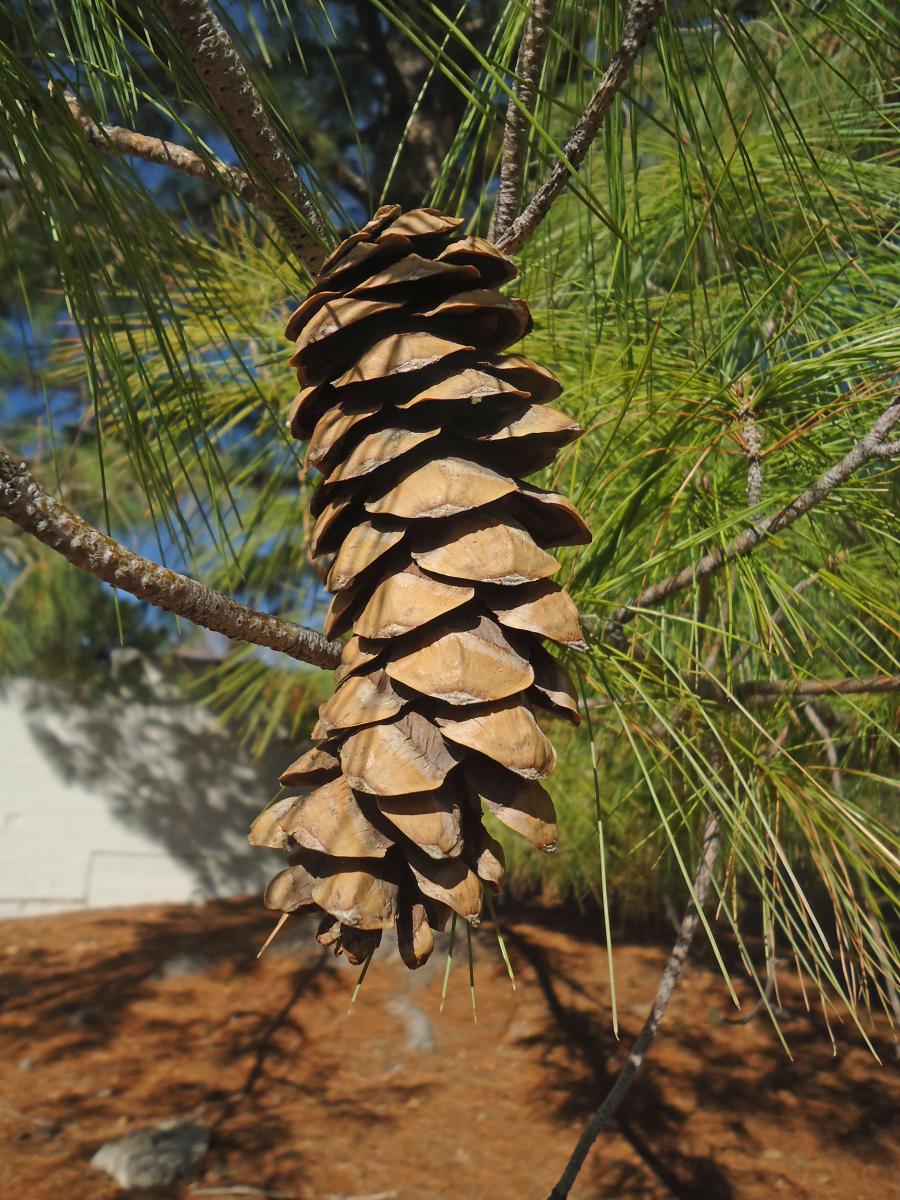
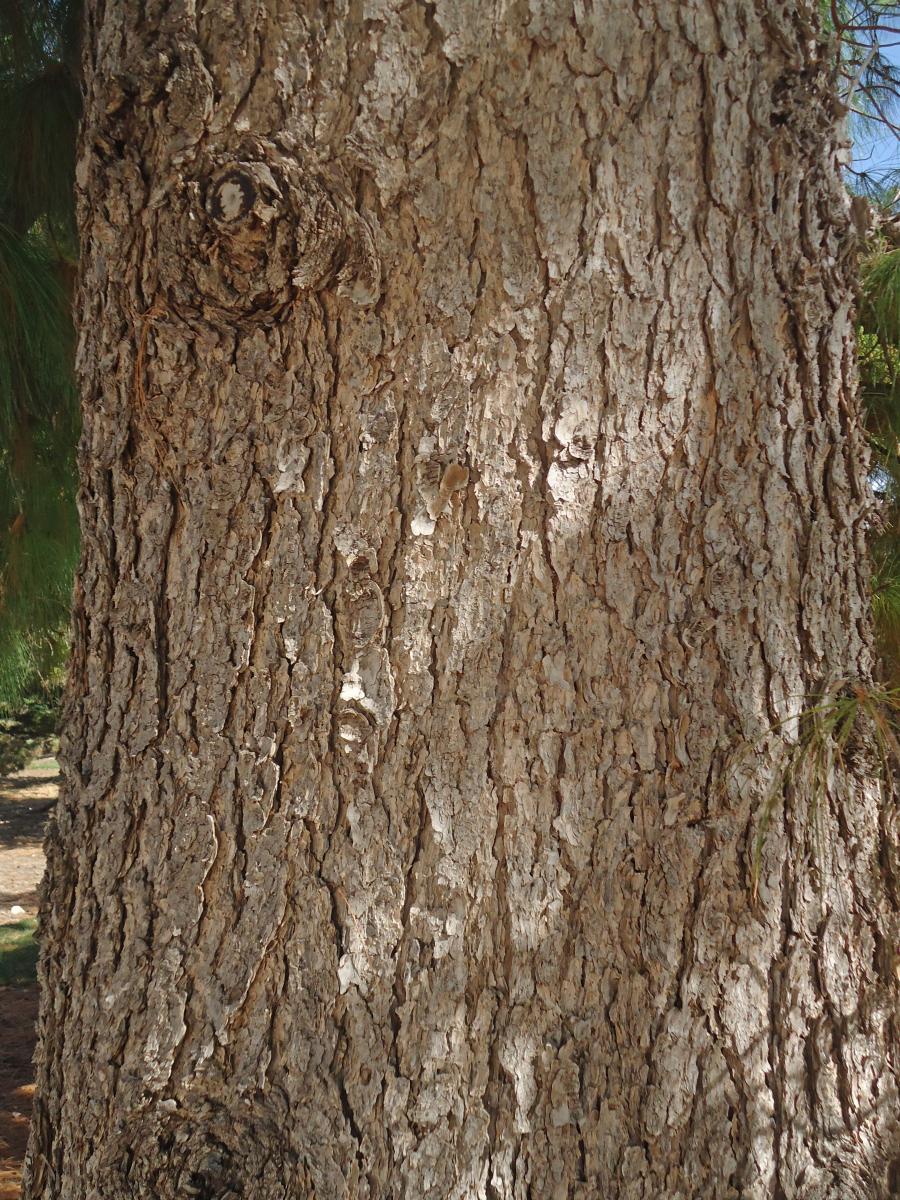
Pinus wallichiana
Leaves: Evergreen. Needles in bundles of 5, grayish-green color, 5 to 8 inches long. The slender needles often bend sharply at the base to hang down to give a pendulous, drooping, and feathery appearance when older.
Bark/Twigs: Orangish-brown to grayish-brown colored bark. Smooth when young, becoming shallowly fissured with flaky plates when mature.
Flowers/Fruit: Flowers inconspicuous. Fruit is a large, woody cone 6 to 10 inches long, 2 inches wide, light-brown when ripe and very resinous with a 1 to 2 inch long stalk.
Mature size and shape: Large. 30 to 50 feet high, width is ½ to ⅔ height. Loosely and broadly pyramidal shape when young. Graceful and often feathered appearance.
General information/special features: Plant in full sun. Shade intolerant. Sandy, well-drained, acidic soil is best. Not recommended for shallow, chalky soil. The Himalayan Pine is used to produce turpentine, which is a common solvent. Historically, turpentine was also used for medicinal purposes.
Landscape use and maintenance: Large ornamental evergreen tree. Slow to medium growing rate. Low maintenance. Fairly tough, but best planted in a location sheltered from dry summer winds and late-day winter sun. May be marginally cold-hardy in Utah. Somewhat difficult to transplant.
USDA Hardiness Zone: 5 to 7
Family/Origin: Pinaceae – Pine. Native to Afghanistan, Nepal, and China.
Campus Use: Uncommon. The tree on the north side of the intersection of North Campus Drive and Central Campus Drive is on the Utah Big Tree Registry.
